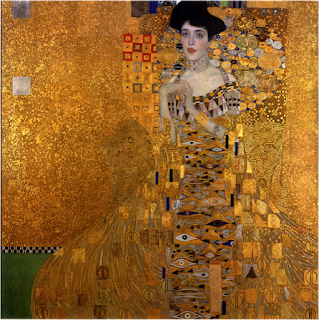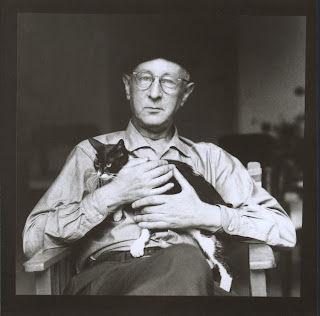To Mnemosyne, Goddess of Memory, Mother of the Muses – and Bane of Tyrants
On September 17th
Charlottesville Chamber Music Festival presented one of the most provocative
programs of its 2017 season. The musical works on this program are drawn from
two radically distinct worlds.
The piano quartet by a young
Gustav Mahler and earlier songs by Richard Strauss, Arnold Schoenberg and Alban
Berg on this program all date from the period 1871–1914 that we know as the
“Belle Époque.” It was also during this age of peace, prosperity and optimism
that Gustav Klimt painted Portrait of
Adele Bloch-Bauer which later came to be known as The Woman in Gold.
The “War to End All Wars” came
and went – and the optimism of the Belle Époque vanished. Despots appeared to
fill the void left by Europe’s broken kingdoms and empires. Mussolini, Hitler,
Franco. And then World War II. Millions of people were killed, their
possessions destroyed or looted in an attempt to wipe out their memory and
accomplishments. The Woman in Gold,
like so many other artworks, was stolen by the Nazis and “aryanized” to wipe
out its provenance and any link to its rightful Jewish owners and heirs. Works
of art were still being created, but their nature was different now.
Just after America joined the
war, Arnold Schoenberg, now an émigré living in Hollywood, composed Ode to Napoleon Buonaparte, a musical
rage at Hitler using the angry words that Byron penned about Napoleon. In
Germany, as the war was ending, Richard Strauss looked around at the
destruction and composed his elegiac Metamorphosen.
The war was over, but what happened to the Woman
in Gold? Where is it today? The answer brings us back, eerily, to music on
this program .
Woman in Gold remained in Austria after the war with the state
continuing to claim ownership. Then in 2006, after years of litigation, the
Austrian government finally agreed to a settlement that returned the painting
(and others) to its rightful owner, Maria Altman, a niece of the painting’s
subject Adele. Maria’s attorney in this successful suit was E. Randol
Schoenberg, grandson of composer Arnold Schoenberg. The painting is now on permanent
public display in the United States – the whole story is told in the 2015 film Woman in Gold with Helen Mirren as Maria
Altman and Ryan Reynolds as Randy Schoenberg.)
Grandson Schoenberg is still
active in finding and returning art looted by the Third Reich as well as
lending significant support to the Los Angeles Holocaust Museum. He is also an
ardent supporter of classical music, including that of his late grandfather.
When asked what he would say about the relevance of his grandfather’s Ode to Napoleon to us today, he said, “I
love that piece.” And then, without hesitation:
“A timeless and
timely warning to would-be tyrants.”




Comments
Post a Comment